Instruction
The Ultimate Putting Program (Part 5): The Pre-Shot Routine
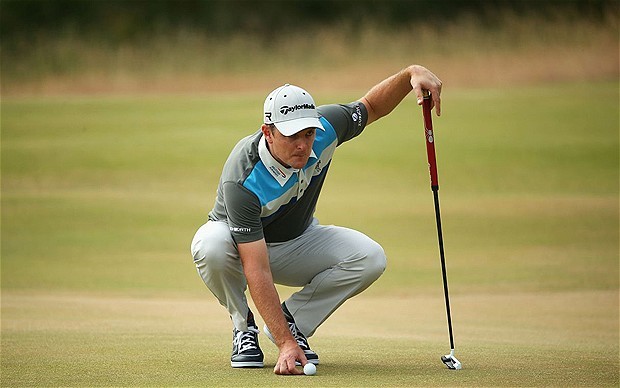
The essence of putting is the ability to roll your ball on your intended line as far as the hole, which we have discussed in previous articles. There is one last variable to putting that I believe is most important. At the end of the day, golfers are only as strong as their pre-shot routine. I imagine that close to 100 percent of golfers are seeking to become more consistent this year. The pre-shot routine is a sure way of developing the skills necessary to be more consistent under a variety of circumstances.
You may be familiar with a pre-shot routine that includes a few practice strokes, a look at the hole and a few waggles. That is fine, but in my opinion a true pre-shot routine is based around a mental process that allows golfers to get in the right state of mind to perform at their highest potential. As you watch golf on TV this year, pay close attention to how the players mentally visualize the shot at hand. Notice how they walk into the address position with a sense of rhythm, while remaining focused on the target. Listen to how they speak to the media and how it relates to their mental preparation. Tiger Woods frequently addresses the media with statements about “the process” or that he likes the feeling of “being in his own little world.” He is probably referring to the zone-like state where time stands still, he is free of distraction and is solely focused on the task at hand.
Free throw shooters, field goal kickers, baseball pitchers, bowlers, archers and golfers are among the athletes that rely heavily on their pre-shot routine for peak performance. Michael Jordan once said that he spent the majority of his practice time developing a zone-like atmosphere that he could rely on under the most intense pressure.
Often times, field goal kickers are relied upon to win games for their team. The pressure involved in kicking field goals that decide the outcome of games with all of the fans and your entire team relying on you must be astonishing. Field goal kickers rely on their pre-shot routine and their commitment to the target to free themselves of the distractions that are associated with kicking game-winning field goals.
I suggest learning the pre-shot routing that Dr. Bob Rotella outlines in his audio disc, Putting Like A Genius. I have paraphrased it for you.
No. 1: Assess the Situation
The first step of the pre-shot routine is to assess the situation. In the long game, it includes determining the lie of the golf ball, the wind conditions, potential hazards, etc. In putting, you should identify the speed of the green, the degree of the slope, the position that the ball sits on the slope, the length of the putt and sometimes the grain of the grass. Once that data has been collected it is important to use it to visualize the ball rolling on the intended line and into the hole.
No. 2: Visualize The Shot
Jack Nicklaus said, “I never hit a shot, not even in practice, without having a very sharp, in-focus picture of it in my head.”
It is important to visualize the shot at hand with as much detail and clarity as possible. The more detailed your visualization, the more your brain will believe it. You can actually increase your confidence by developing a clear and vivid visualization of the shot that you intend to play. You must see it to believe it.
In David Cook’s story, “Seven Days in Utopia, Golf’s Sacred Journey,” Johnny teaches Luke to visualize his shot from behind an old tree by having him paint his intended shot onto a canvas. After spending the time to paint the picture, Luke hit the shot with great accuracy. This part of the story portrays the importance of a player’s visualization of the shot that he intends to play. Remember, the more clearly and vividly you visualize, the more confidently you will be to execute the shot.
And don’t tell me that you can’t visualize,because that is completely false. Right now visualize an apple, a house, your house, a loved one’s face. Pretty easy, right?
A practice drill: Get a pencil and a piece of paper. Write the letter “A” while visualizing the letter “B.” If the letter “A” creeps into your mind, stop and start over. You’ll find that is impossible to write an “A” while thinking about anything other than the letter “A”. So how do you think you’re going to putt the ball into the hole when you’re thinking about missing? Or when you’re worried about what your buddies are thinking? Or if you’re worried that you may be taking too long? The point is to visualize your intention and maintain that image for the amount of time it takes for you to execute the shot. Easy right?
No. 3: Feel The Shot
The next step in the routine is to take practice strokes that represent the amount of force for the intended shot. Far too many golfer take practice strokes that don’t resemble the length of putt that they are about to hit. I suggest looking at the target while taking practice strokes so that your mind and body can better match the feel required for the intended putt. It doesn’t matter if you stand to the side of the ball or behind the ball; the important thing is that you do it while looking at the target. For instance, I am a spot putter so as I take my practice strokes, I clearly focus on the spot that I selected and imagine rolling my ball to it.
Note: I suggest practice putting while looking at the target to enhance your awareness.
No. 4: Execute The Shot
Next, place your putter behind the ball and settle into the address position while remaining mentally aware of the target. After taking your final look at the target, return your eyes to the ball and without hesitation begin the stroke. It doesn’t help to stand over the ball waiting for something magical to happen, so keep the time from when your eyes return to the ball to when you begin your stroke as short as possible (1 to 2 seconds). I believe it is important for your mind to remain aware of the target even during the stroke and trust that you are capable of producing the desired result.
It is important to not allow thoughts of putting mechanics to enter the brain at this stage of the routine, as it will disrupt you from the natural state of awareness.
No. 5: Accept The Outcome
The last and most important part of the routine is to accept the outcome of the shot. You don’t have control of whether or not the ball goes in the hole. For instance, you could have made the perfect read, the perfect stroke and the perfect routine, and the ball could have still missed the hole because it was forced offline by a spike mark on the green. The only thing to do is to assess yourself on your commitment to you pre-shot routine; the rest must be left up to faith.
A few years ago I disciplined myself to practicing this pre-shot routine everyday for 15-to-20 minutes. I also made it a habit to listen to Putting Like a Genius and Putting Out of Your Mind, both by Dr. Bob Rotella. At the peak of my putting performance I played nine holes and didn’t miss a putt. I made every one of them, finishing with a total of eight putts and shooting seven under par. You could say that I was in the zone. So I know it works! But I did it by making a true commitment to developing the enjoyment of the process, rather than focusing on the results. Stay patient and I am sure you will reap the rewards of this article.
If there is one thing you learn from this series, learn this; develop a mental routine and use it on every shot. Do this, along with the other information discussed in this series, and you are on your way to playing better golf.
Instruction
The Wedge Guy: Beating the yips into submission

There may be no more painful affliction in golf than the “yips” – those uncontrollable and maddening little nervous twitches that prevent you from making a decent stroke on short putts. If you’ve never had them, consider yourself very fortunate (or possibly just very young). But I can assure you that when your most treacherous and feared golf shot is not the 195 yard approach over water with a quartering headwind…not the extra tight fairway with water left and sand right…not the soft bunker shot to a downhill pin with water on the other side…No, when your most feared shot is the remaining 2- 4-foot putt after hitting a great approach, recovery or lag putt, it makes the game almost painful.
And I’ve been fighting the yips (again) for a while now. It’s a recurring nightmare that has haunted me most of my adult life. I even had the yips when I was in my 20s, but I’ve beat them into submission off and on most of my adult life. But just recently, that nasty virus came to life once again. My lag putting has been very good, but when I get over one of those “you should make this” length putts, the entire nervous system seems to go haywire. I make great practice strokes, and then the most pitiful short-stroke or jab at the ball you can imagine. Sheesh.
But I’m a traditionalist, and do not look toward the long putter, belly putter, cross-hand, claw or other variation as the solution. My approach is to beat those damn yips into submission some other way. Here’s what I’m doing that is working pretty well, and I offer it to all of you who might have a similar affliction on the greens.
When you are over a short putt, forget the practice strokes…you want your natural eye-hand coordination to be unhindered by mechanics. Address your putt and take a good look at the hole, and back to the putter to ensure good alignment. Lighten your right hand grip on the putter and make sure that only the fingertips are in contact with the grip, to prevent you from getting to tight.
Then, take a long, long look at the hole to fill your entire mind and senses with the target. When you bring your head/eyes back to the ball, try to make a smooth, immediate move right into your backstroke — not even a second pause — and then let your hands and putter track right back together right back to where you were looking — the HOLE! Seeing the putter make contact with the ball, preferably even the forward edge of the ball – the side near the hole.
For me, this is working, but I am asking all of you to chime in with your own “home remedies” for the most aggravating and senseless of all golf maladies. It never hurts to have more to fall back on!
Instruction
Looking for a good golf instructor? Use this checklist

Over the last couple of decades, golf has become much more science-based. We measure swing speed, smash factor, angle of attack, strokes gained, and many other metrics that can really help golfers improve. But I often wonder if the advancement of golf’s “hard” sciences comes at the expense of the “soft” sciences.
Take, for example, golf instruction. Good golf instruction requires understanding swing mechanics and ball flight. But let’s take that as a given for PGA instructors. The other factors that make an instructor effective can be evaluated by social science, rather than launch monitors.
If you are a recreational golfer looking for a golf instructor, here are my top three points to consider.
1. Cultural mindset
What is “cultural mindset? To social scientists, it means whether a culture of genius or a culture of learning exists. In a golf instruction context, that may mean whether the teacher communicates a message that golf ability is something innate (you either have it or you don’t), or whether golf ability is something that can be learned. You want the latter!
It may sound obvious to suggest that you find a golf instructor who thinks you can improve, but my research suggests that it isn’t a given. In a large sample study of golf instructors, I found that when it came to recreational golfers, there was a wide range of belief systems. Some instructors strongly believed recreational golfers could improve through lessons. while others strongly believed they could not. And those beliefs manifested in the instructor’s feedback given to a student and the culture created for players.
2. Coping and self-modeling can beat role-modeling
Swing analysis technology is often preloaded with swings of PGA and LPGA Tour players. The swings of elite players are intended to be used for comparative purposes with golfers taking lessons. What social science tells us is that for novice and non-expert golfers, comparing swings to tour professionals can have the opposite effect of that intended. If you fit into the novice or non-expert category of golfer, you will learn more and be more motivated to change if you see yourself making a ‘better’ swing (self-modeling) or seeing your swing compared to a similar other (a coping model). Stay away from instructors who want to compare your swing with that of a tour player.
3. Learning theory basics
It is not a sexy selling point, but learning is a process, and that process is incremental – particularly for recreational adult players. Social science helps us understand this element of golf instruction. A good instructor will take learning slowly. He or she will give you just about enough information that challenges you, but is still manageable. The artful instructor will take time to decide what that one or two learning points are before jumping in to make full-scale swing changes. If the instructor moves too fast, you will probably leave the lesson with an arm’s length of swing thoughts and not really know which to focus on.
As an instructor, I develop a priority list of changes I want to make in a player’s technique. We then patiently and gradually work through that list. Beware of instructors who give you more than you can chew.
So if you are in the market for golf instruction, I encourage you to look beyond the X’s and O’s to find the right match!
Instruction
What Lottie Woad’s stunning debut win teaches every golfer

Most pros take months, even years, to win their first tournament. Lottie Woad needed exactly four days.
The 21-year-old from Surrey shot 21-under 267 at Dundonald Links to win the ISPS Handa Women’s Scottish Open by three shots — in her very first event as a professional. She’s only the third player in LPGA history to accomplish this feat, joining Rose Zhang (2023) and Beverly Hanson (1951).
But here’s what caught my attention as a coach: Woad didn’t win through miraculous putting or bombing 300-yard drives. She won through relentless precision and unshakeable composure. After watching her performance unfold, I’m convinced every golfer — from weekend warriors to scratch players — can steal pages from her playbook.
Precision Beats Power (And It’s Not Even Close)
Forget the driving contests. Woad proved that finding greens matters more than finding distance.
What Woad did:
• Hit it straight, hit it solid, give yourself chances
• Aimed for the fat parts of greens instead of chasing pins
• Let her putting do the talking after hitting safe targets
• As she said, “Everyone was chasing me today, and managed to maintain the lead and played really nicely down the stretch and hit a lot of good shots”
Why most golfers mess this up:
• They see a pin tucked behind a bunker and grab one more club to “go right at it”
• Distance becomes more important than accuracy
• They try to be heroic instead of smart
ACTION ITEM: For your next 10 rounds, aim for the center of every green regardless of pin position. Track your greens in regulation and watch your scores drop before your swing changes.
The Putter That Stayed Cool Under Fire
Woad started the final round two shots clear and immediately applied pressure with birdies at the 2nd and 3rd holes. When South Korea’s Hyo Joo Kim mounted a charge and reached 20-under with a birdie at the 14th, Woad didn’t panic.
How she responded to pressure:
• Fired back with consecutive birdies at the 13th and 14th
• Watched Kim stumble with back-to-back bogeys
• Capped it with her fifth birdie of the day at the par-5 18th
• Stayed patient when others pressed, pressed when others cracked
What amateurs do wrong:
• Get conservative when they should be aggressive
• Try to force magic when steady play would win
• Panic when someone else makes a move
ACTION ITEM: Practice your 3-6 foot putts for 15 minutes after every range session. Woad’s putting wasn’t spectacular—it was reliable. Make the putts you should make.
Course Management 101: Play Your Game, Not the Course’s Game
Woad admitted she couldn’t see many scoreboards during the final round, but it didn’t matter. She stuck to her game plan regardless of what others were doing.
Her mental approach:
• Focused on her process, not the competition
• Drew on past pressure situations (Augusta National Women’s Amateur win)
• As she said, “That was the biggest tournament I played in at the time and was kind of my big win. So definitely felt the pressure of it more there, and I felt like all those experiences helped me with this”
Her physical execution:
• 270-yard drives (nothing flashy)
• Methodical iron play
• Steady putting
• Everything effective, nothing spectacular
ACTION ITEM: Create a yardage book for your home course. Know your distances to every pin, every hazard, every landing area. Stick to your plan no matter what your playing partners are doing.
Mental Toughness Isn’t Born, It’s Built
The most impressive part of Woad’s win? She genuinely didn’t expect it: “I definitely wasn’t expecting to win my first event as a pro, but I knew I was playing well, and I was hoping to contend.”
Her winning mindset:
• Didn’t put winning pressure on herself
• Focused on playing well and contending
• Made winning a byproduct of a good process
• Built confidence through recent experiences:
- Won the Women’s Irish Open as an amateur
- Missed a playoff by one shot at the Evian Championship
- Each experience prepared her for the next
What this means for you:
• Stop trying to shoot career rounds every time you tee up
• Focus on executing your pre-shot routine
• Commit to every shot
• Stay present in the moment
ACTION ITEM: Before each round, set process goals instead of score goals. Example: “I will take three practice swings before every shot” or “I will pick a specific target for every shot.” Let your score be the result, not the focus.
The Real Lesson
Woad collected $300,000 for her first professional victory, but the real prize was proving that fundamentals still work at golf’s highest level. She didn’t reinvent the game — she simply executed the basics better than everyone else that week.
The fundamentals that won:
• Hit more fairways
• Find more greens
• Make the putts you should make
• Stay patient under pressure
That’s something every golfer can do, regardless of handicap. Lottie Woad just showed us it’s still the winning formula.
FINAL ACTION ITEM: Pick one of the four action items above and commit to it for the next month. Master one fundamental before moving to the next. That’s how champions are built.
PGA Professional Brendon Elliott is an award-winning coach and golf writer. You can check out his writing work and learn more about him by visiting BEAGOLFER.golf and OneMoreRollGolf.com. Also, check out “The Starter” on RG.org each Monday.
Editor’s note: Brendon shares his nearly 30 years of experience in the game with GolfWRX readers through his ongoing tip series. He looks forward to providing valuable insights and advice to help golfers improve their game. Stay tuned for more Tips!










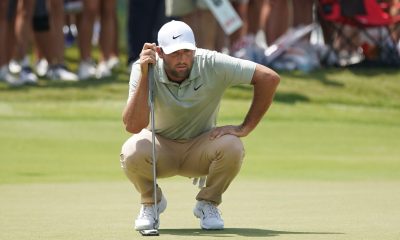



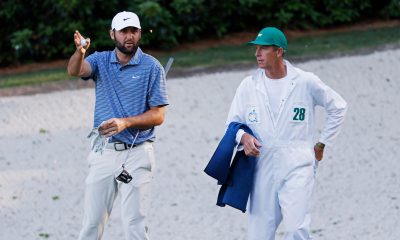

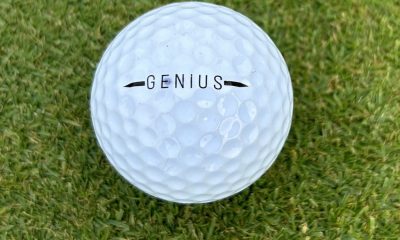



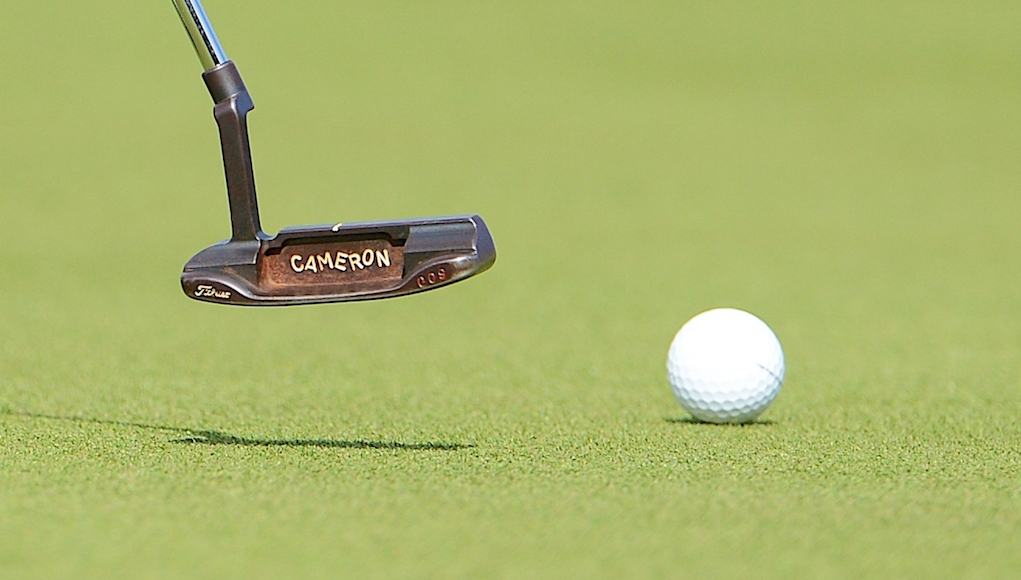








Pingback: Beat the yips with these simple tips | GolfClick.net | Blog
Pingback: Beat The Yips With These Simple Tips : Dan Hansen Golf Instruction
Ed
Jan 9, 2014 at 12:07 pm
Henry, I think it is critical that the player understand that they must be “using” their visualization of the putt during the stroke. Once the player is at address, their total attention should be directed to visualizing the the ball rolling to and stopping at their target. It is only with this visualization active in the brain that the unconscious can then formulate its instructions to the muscles. When the player is successful at doing this they will be unaware of the club swinging or ball contact. To your example, when you write and “A” you are conscious of the mental image and unconscious regarding which muscles and joints are being used and how much grip pressure is needed. All of the physical action is an unconscious reaction to the conscious visualization.
Henry Stetina
Jan 9, 2014 at 12:18 pm
Ed!!! I am glad to hear from you! I will always remember the lesson that you gave me at McCromick Ranch a couple of years ago on how to maintain full awareness/visualization of the target during the stroke. I have thought about that a lot and I believe it is the only way great performers excel in at their task. Artists obviously maintain a mental visualization of what they are painting, drawing, sculpting, etc. Musicians use a mental sound or rhythm that they maintain throughout their performance. It is the way we process information naturally but so much of golf instruction has forced golfers to become more aware of physical movements that many of us have lost track of the underlying objective of sending the ball to the target.
Sam
Jan 6, 2014 at 5:50 pm
That’s awesome I’m gonna read over each part once every 2 weeks great knowledge very helpful
paul
Jan 6, 2014 at 9:10 am
Reading a pre shot routine article still only helps if i am on a practice green and can use it. to bad it is -30 right now.
Henry Stetina
Jan 6, 2014 at 9:18 am
THIS IS A GREAT COMMENT!!! It is actually easier to develop a pre-shot routine at your home because you will be less concerned with the results. Rotella actually suggest practicing it at home. This is a great opportunity for you to develop a solid pre-shot routine so when the snow melts you will be ready to take it to the course.
Henry Stetina
Jan 6, 2014 at 9:59 am
By the way… -30 sounds awful!!! It should get to 68 in Phoenix today.
Adrian
Jan 6, 2014 at 3:49 am
Excellent article….I was really drilling home number 4 just yesterday because I found the more I hesitated when I took my eyes away from the target the more erratic my results became. It doesn’t take long at all for you to lose focus of the target if you don’t execute the shot immediately. Very helpful article.
Henry Stetina
Jan 6, 2014 at 9:12 am
Thanks Adrian. You are spot on. We lose focus of the target very quickly. Dr. Bob Rotella gave this advice to Davis Love III and it really hit home for him too.
DIRK
Jan 6, 2014 at 3:12 am
I was able to write the letter A while visualizing a B.
marty
Jan 6, 2014 at 2:06 am
and you’d also better get used to playing 5+ hour rounds.
this is exactly whats wrong with golf, everyone thinking they are playing for the Open.
Henry Stetina
Jan 6, 2014 at 9:09 am
I completely disagree. From my experience this speeds up play. Slow rounds are caused by golfers’ minds filled with fear and doubt. 4 guys shooting 100 is what takes a long time.
AJ
Jan 6, 2014 at 11:39 am
Agree Henry. I’m not an overly quick player (nor am I slow) but play off a 0-1 handicap and therefore shoot anywhere between 10 and 20 strokes less than most guys at my club.
3 of me vs 3 of them would be about an hour quicker to the ‘me’s’, despite me seemingly taking longer over each shot – I take less shots because of the time I sometimes take.
I agree touring professionals have become far too deliberate though – a 3 ball of scratch golfers at my club (in the UK) would take no more than 3.5 hours to complete 18 holes on an average day. 5+ hours for the pros is ridiculous.
Henry Stetina
Jan 6, 2014 at 3:11 pm
Agreed. A foursome of scratch golfers will probably take the same amount of time and strokes as a threesome of 100 shooters.
You are correct in that touring pros have become a bit slow. But they are also playing for a million dollars every week. Their slow play is definitely a bad example for the weekend golfer.
Golf as a whole is played much quicker in Europe than in America. Surprisingly walking is usually faster than taking a cart.
DaveMac
Jun 30, 2014 at 1:55 pm
Please develop a SHORT pre shot routine, imagine the outcome if the guy who takes 40 putts a round buys into this but does not improve.
A routine is good but make it a fast one. (Jim Furyk likes his so much he does it twice)
amateur
Jan 5, 2014 at 5:19 pm
Ok, I’ll try to do this.